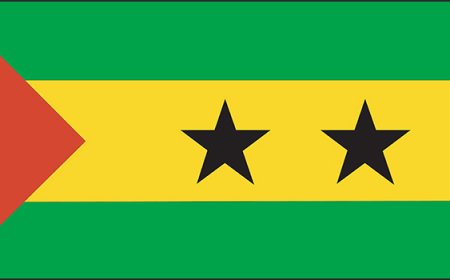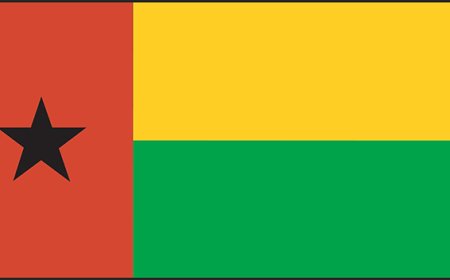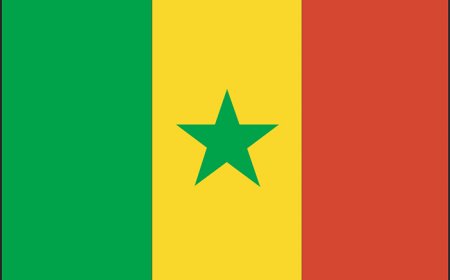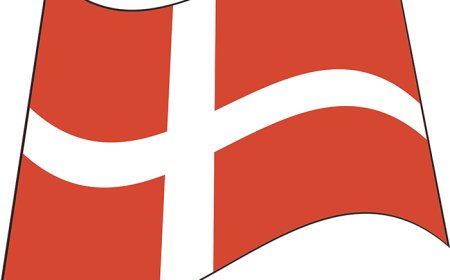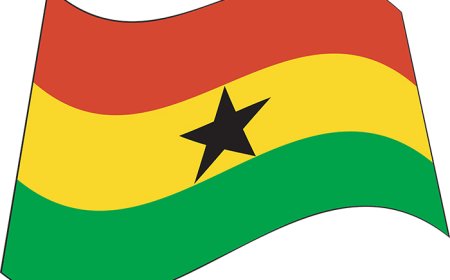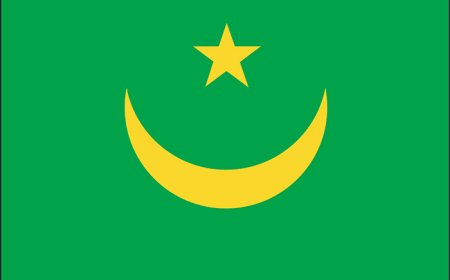Central African Republic for Students: Geography, People, and Path to Peace
Discover the geography, culture, and challenges of the Central African Republic in this student-friendly article with vocabulary, quiz, and national education standards.
🌍 Introduction: The Center of a Continent
The Central African Republic, often shortened to CAR, is located right in the middle of Africa. It is a country of savannas, forests, rivers, and mountains, and it is home to hundreds of ethnic groups and languages. Although the nation is rich in gold, diamonds, and wildlife, it has faced many challenges, including conflict, poverty, and political instability. Today, the people of CAR are working hard to rebuild, educate, and restore peace in a country with great potential and deep cultural roots.
🗺️ Geography and Environment
The Central African Republic is landlocked, meaning it has no coastline. It is surrounded by Chad, Sudan, South Sudan, the Democratic Republic of the Congo, the Republic of the Congo, and Cameroon. Despite being centrally located, much of the country remains remote and difficult to reach due to limited road networks.
CAR’s geography includes:
Grasslands and savannas in the north and center
Dense tropical rainforests in the south
Several rivers, including the Ubangi, Sangha, and Mbomou
High plateaus and gentle hills, with the Mount Ngaoui being the highest point
The climate is tropical, with a wet season (May–October) and a dry season (November–April). These environments support a wide variety of wildlife, including:
Elephants
Gorillas
Leopards
Buffalo
Birds and reptiles
CAR’s Dzanga-Sangha Reserve is one of the most important ecological areas in Central Africa, known for its forest elephants and lowland gorillas.
🏛️ Government, Language, and Population
The Central African Republic is officially a presidential republic, but the country has experienced many periods of civil unrest, coups, and armed conflict since gaining independence. Although there is a president and national assembly, security and peace are still fragile in many regions.
The capital city is Bangui, located along the Ubangi River in the south. Bangui is the country’s largest city and the center for government, trade, and transportation.
The population of CAR is about 5.5 million people. The country is ethnically diverse, with over 80 ethnic groups, including:
Baya (Gbaya)
Banda
Mandjia
Sara
Mbaka
Yakoma
There are two official languages: French and Sango. Sango is a local language spoken by most people in daily life, making CAR one of the few African countries where an African language is widely used as a national language.
Most people in CAR are Christian (mainly Catholic and Protestant), but Islam and traditional African religions are also practiced. In recent years, religious and ethnic tensions have led to violent conflicts, but communities are working toward reconciliation and peace.
🎭 Culture and Daily Life
Life in the Central African Republic differs greatly between urban and rural areas. In Bangui, people work in shops, schools, and offices, while in villages, people grow food, fish, and raise animals for survival.
Most people live in rural areas and work in subsistence agriculture, growing crops like:
Cassava
Maize
Peanuts
Plantains
Yams
Daily meals often include fufu, a dough made from cassava, served with vegetables, fish, or peanut sauce. Families are large and closely connected, with elders playing an important role in passing down traditions and wisdom.
Traditional music uses instruments like drums, harps, and flutes, and dances are performed during ceremonies, festivals, and storytelling events. Arts and crafts include wood carving, basket weaving, and beadwork.
Education is free by law, but access is limited in rural areas. Many children—especially girls—cannot attend school regularly due to lack of supplies, long travel distances, or unsafe conditions caused by conflict.
📜 History: From Kingdoms to Colonial Rule to Independence
Before colonization, the region was home to many independent kingdoms and clans that traded in goods like iron, ivory, and salt. In the late 1800s, the area became part of French Equatorial Africa, and it was known as Oubangui-Chari.
The French used forced labor and collected taxes, causing hardship for local communities. After years of struggle, the country gained independence in 1960 and was renamed the Central African Republic.
Since then, CAR has experienced repeated military coups, rebel uprisings, and civil wars. The most recent major conflict began in 2013, when armed groups took control of parts of the country, leading to widespread violence.
Today, with support from the United Nations and international peacekeepers, CAR is working toward peacebuilding, justice, and economic development.
💰 Economy and Resources
CAR is rich in natural resources, including:
Diamonds
Gold
Uranium
Timber
Oil (still developing)
However, much of the population remains poor due to conflict, corruption, and lack of infrastructure. Many people depend on subsistence farming, and only a small percentage have access to electricity, clean water, and healthcare.
CAR’s government is trying to improve:
Roads and transportation
Health services
Education systems
Mining safety and fairness
The country also hopes to develop eco-tourism, especially in protected areas like Dzanga-Sangha, which draw researchers, conservationists, and nature lovers.
🌿 Wildlife and Natural Beauty
The Central African Republic is home to some of Africa’s most impressive ecosystems. The southern rainforests are part of the Congo Basin, the second-largest rainforest in the world after the Amazon.
Protected parks like the Dzanga-Sangha Special Reserve are vital to global conservation. These areas protect:
Western lowland gorillas
Forest elephants
Sitatunga antelope
Rare birds and butterflies
In the northern savannas, lions, giraffes, and antelope once roamed freely, though these species have become rarer due to poaching and habitat loss.
Efforts are growing to train rangers, protect animals, and promote environmental education for young people.
📚 Vocabulary List
Word Definition
Landlocked A country that has no coastline or access to the sea
Bangui The capital city of the Central African Republic
Subsistence farming Growing just enough food for a family's own use
Cassava A root vegetable used to make fufu and other foods
French Equatorial Africa A group of French colonies in Central Africa before independence
Sango A local African language and official language of CAR
Dzanga-Sangha A famous wildlife reserve in the rainforest of CAR
Coup A sudden overthrow of a government, usually by force
Reconciliation The act of making peace and restoring good relationships
Conflict Fighting or war between groups with different beliefs or goals
🧒 Kid-Friendly Summary
The Central African Republic is in the middle of Africa. It has forests, rivers, and grasslands where gorillas and elephants live. Most people speak Sango and French. Families grow food like cassava and maize, and kids often help with farming. Life can be hard because of past wars, but people are working to bring peace and protect the country’s animals, forests, and traditions.
🎯 Interactive Quiz: What Do You Know About the Central African Republic?
1. What is the capital of the Central African Republic?
a) Kinshasa
b) Bangui
c) Libreville
d) Yaoundé
✅ Answer: b) Bangui
2. What does it mean that CAR is landlocked?
a) It has no trees
b) It is an island
c) It has no borders
d) It has no coastline
✅ Answer: d) It has no coastline
3. What language do most people speak in CAR?
a) English
b) Arabic
c) Sango
d) Swahili
✅ Answer: c) Sango
4. What is cassava used to make?
a) Soup
b) Fufu
c) Salad
d) Bread
✅ Answer: b) Fufu
5. What is the name of CAR’s famous wildlife reserve?
a) Sahara Park
b) Mount Elgon
c) Dzanga-Sangha
d) Congo Forest
✅ Answer: c) Dzanga-Sangha
6. What major resource is found in CAR?
a) Diamonds
b) Salt
c) Coal
d) Bamboo
✅ Answer: a) Diamonds
7. What group ruled CAR before independence?
a) Portugal
b) Germany
c) France
d) Belgium
✅ Answer: c) France
8. What is reconciliation?
a) Farming in the rain
b) Building schools
c) Making peace after conflict
d) Selling goods
✅ Answer: c) Making peace after conflict
🏫 National Education Standards Alignment
Geography (NGS Standards):
1: Using maps
4: Physical and human characteristics of places
10: Distribution of resources
13: Cooperation and conflict among societies
History (U.S. History Standards):
Historical Thinking Standards 1–3
Era 7 & 8: Colonization, independence, and modern Africa
Social Studies (C3 Framework):
D2.Geo.4-8, D2.His.1-8, D2.Civ.2-8
Literacy (Common Core):
RI.6.1, RI.6.2, RI.6.4, RH.6-8.7


















































